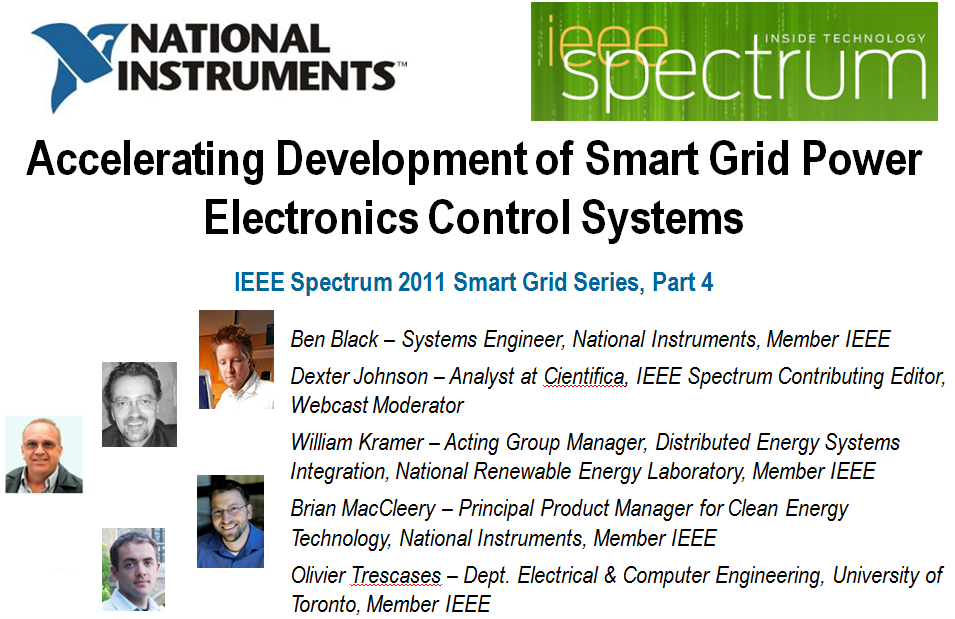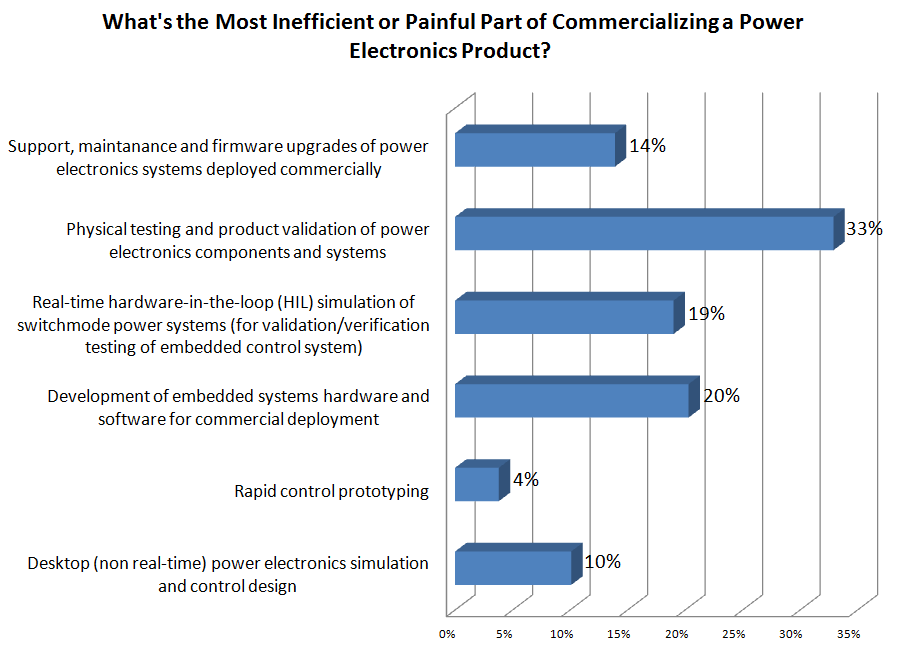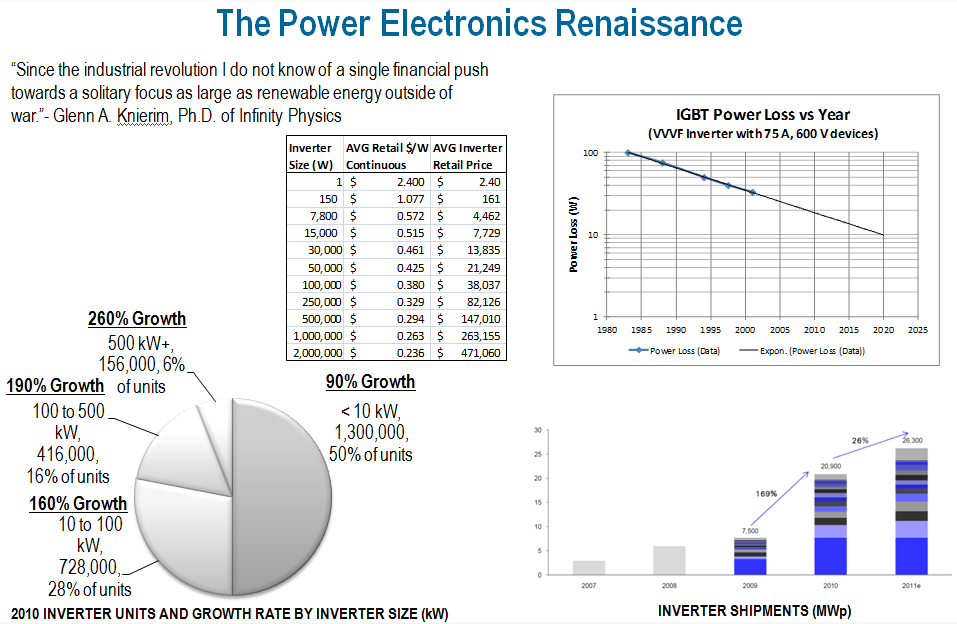- Subscribe to RSS Feed
- Mark Topic as New
- Mark Topic as Read
- Float this Topic for Current User
- Bookmark
- Subscribe
- Mute
- Printer Friendly Page
IEEE Spectrum Webcast: Accelerating Development of Smart Grid Power Electronics Control Systems with RCP and HIL Techniques
11-10-2011 02:33 PM
- Mark as New
- Bookmark
- Subscribe
- Mute
- Subscribe to RSS Feed
- Permalink
- Report to a Moderator
Accelerating Development of Smart Grid Power Electronics Control Systems with RCP and HIL Techniques
The design and deployment of grid-tied power electronics control systems historically has been hampered by a lack of rapid prototyping, commercial off-the-shelf embedded systems and real-time HIL simulators that satisfy the demanding requirements of switch-mode power system designers. To address these challenges, National Instruments is involved in a collaborative R&D effort with the National Renewable Energy Lab and other groups to develop a comprehensive new tool chain for power electronics system design based on reconfigurable FPGAs and high level graphical programming tools. Attend this session to see live demonstrations of new hardware/software tools under development and information on how you can become pioneer user and collaborator in the effort.
WEBCAST RECORDING
Click here to access the presentation: http://spectrum.ieee.org/webinar/1951624
PRESENTERS
Brian MacCleery– Product Manager for Clean Energy Technology at National Instruments.
Dr. William Kramer – Senior Engineer II, National Renewable Energy Laboratory, Electricity, Resources, & Building Systems Integration Center.
Dr. Olivier Trescases – University of Toronto
Dr. Ben Black – Systems Engineer - Simulation, Advanced Control and Robotics, National Instruments.
Dexter Johnson (Moderator) – Analyst at Cientifica, a business intelligence company for emerging technologies.Contributing editor for IEEE Spectrum’s Tech Talk.

POLL RESULTS
What's the Most Inefficient or Painful Part of Commercializing a Power Electronics Product?
79 Votes:

CORRECTION
The quote on slide 3 should read:
“Since the industrial revolution I do not know of a single financial push towards a solitary focus as large as renewable energy outside of war.”- Glenn A. Knierim, Ph.D. of Infinity Physics

QUESTIONS & ANSWERS
Your projection with increases over the next few years for fuels. Do you think / expect that to change concerning the down turn in the economy? Financials to purchase equipment?
Typically, ”Moore’s Law” type technology trends resulting in improving performance/price proceed independently of the economy. So you can expect the 6% per year improvement in the energy efficiency of IGBT transistors to continue, regardless of the economy. This will create new products, new opportunities for power electronics designs as they reach critical cost crossovers for different applications. For example, electric vehicles already make economic sense today, but they will become much cheaper in the years ahead.
Can you send me the slide comparing inverter costs per W?
The slide presentation will be archived online. An email will go out to attendees when it is available. You can also do a rough calculation using this formula: Retail_Price ($/W) = 2.4*(Size_in_Watts)^(-0.16) Note that commercial/volume prices are significantly less than the retail price (roughly Retail_Price ($/W)*y), where y is typically between 0.55 and 0.85. The commercial selling price is usually the constraint for design engineers.
Everyone- please let me know if you agree or disagree with the numbers in this price model. Also, I'm interesting in developing another model showing how this will change over time. If you have historical price data for inverters, please share it! I'll help create the model for price vs. year.
| Inverter Size (W) | AVG Retail $/W Continuous | AVG Inverter Retail Price |
| 1 | $2.400 | $2.40 |
| 150 | $1.077 | $161 |
| 7,800 | $0.572 | $4,462 |
| 15,000 | $0.515 | $7,729 |
| 30,000 | $0.461 | $13,835 |
| 50,000 | $0.425 | $21,249 |
| 100,000 | $0.380 | $38,037 |
| 250,000 | $0.329 | $82,126 |
| 500,000 | $0.294 | $147,010 |
| 1,000,000 | $0.263 | $263,155 |
| 2,000,000 | $0.236 | $471,060 |
How does your variable time step simulation work in real time?
It doesn’t work well in real time. For real-time simulations, we use one of the fixed time step solvers or a discrete formulation of the differential equations. I’ll talk a little more about that later in the presentation. However for the offline co-simulation use case you can actually have the simulation being driven by a variable timestep solver from each side of the simulation.
why unidirectional software development? Isn't there any test plan?
Yes, I would hope there's a test plan. But there is still often a discontinuous software development process that involves a lot of rewriting of code. The problem is knowing whether your embedded code matches the desktop design and rapid prototyping code- if you are trying to use generated code, for example, and you make any changes, it no longer matches your design/simulation code. That's a major problem. Our vision/goal is to enable you to develop your embedded system code on day one and test/debug/optimize it all throughout. Even if you make a change 6 months later, that same code is embedded in your design/simulation environment, so you can rerun your testbenches and validate the changes. That's what we mean by "bi-directional" software development.
How can you add a transfer function to your model. Like a transfer function of a DC motor.Thank you.
Yes. The power of the co-simulation environment is that you have all of the tools that you would expect in the SPICE environment as well as all of the tools that you would expect in a normal simulation environment, and the two simulations are interracting together. In this case, you have all of the tools of LabVIEW Simulation at your disposal including transfer functions, state-space, linear and non-linear elements, etc.
Because you have variable-time step solvers on both sides of the Multisim/LabVIEW interface, you can have coupled dynamics between the two sides. This enables you to put plant models and controls on either the LabVIEW or the Multisim side or both.
You can also include text-based Mathscript code in your simulations (.m code), both in desktop co-simulations (non real-time) and real-time simulations (non co-simulation). This is obviously very useful, especially if you have existing scripts that you've written.
was your power price 80c/kwh? That’s super high!
This is the feed-in tariff rate in Ontario, indeed, very high. You can calculate how it looks at $0.15/kWh.
Is labview capable of three phase analysis?
Yes it certainly is. They have some available toolboxes for that.
Is it possible to do the same interface with another software (not multisim)?
Yes. The External Model Interface (EMI) for the LabVIEW Control Design and Simulation Module is open to all tools. Here is a link to the documentation: http://zone.ni.com/reference/en-XX/help/371894F-01/lvsim/sim_external_model/
Can you get signals from internet packets too?
Which signals do you mean?
Is there any relation between the converter complexity (number of components) and the switching frequency to allow real-time simulations ?
For a given converter topology, you end up with N number of coefficient value sets for your A matrix in the state-space model. When the switches and diodes are conducting or not determines the model at any given instant. The discontinuous conduction mode of passive components like diodes has to be handled. Fortunately, the FPGA enables you to switch rapidly by keeping the different matrix coefficients in RAM. You can typically switch between states in one simulation time step. Of course, numerical convergence must always be considered when switching between piecewise defined statespace models.
Post your unanswered questions below...
